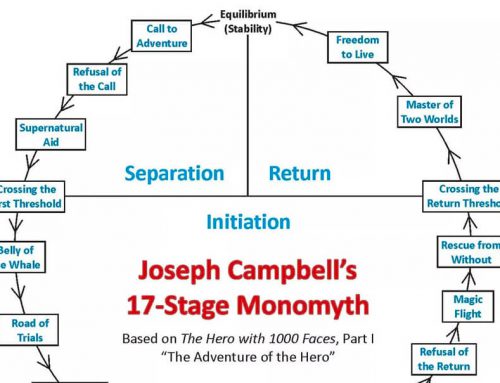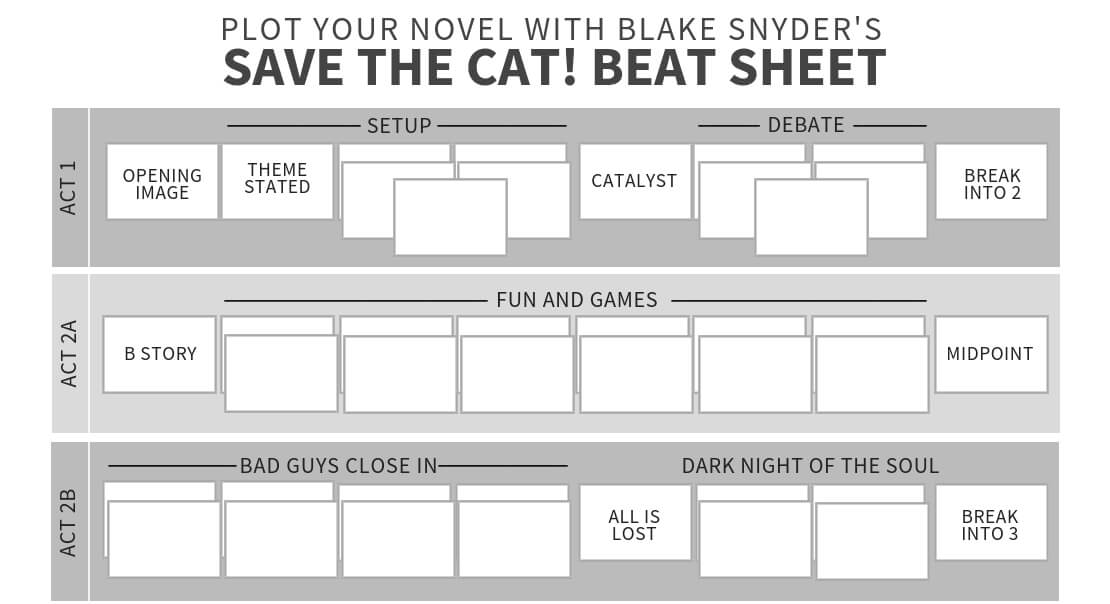
Using Screenwriting Techniques for Plot
After reviewing the basics of the plot, you may want to take your story to another layer.
The 15 Beats that Saved the Cat by Blake Synder is written for screenwriters. However, it's an excellent source for all story writers.
Snyder unrolls 15 Beats to move the story forward. Yes, 15 beats is designed for screenplays; however, it is an excellent road map for all stories. (I recommend purchasing this book for your library).
This is a great little video that uses simple examples to walk through each of the 15 steps. I think it's best to start with the graspable building blocks and build out our own stories from there. So, enjoy this great video and I'll catch you on the other side.
Once you have this basic understanding of the 15 beats, it's not only easy to use in other stories you read and watch, but to help through the 'sticky' spots in your own story.
Below, I've listed out each of the 15 beats. Following this list, I have also included for you a beat sheet and links to additional resources.
A Breakdown of the 15 Beats:
1. Opening Image – The main character/hero and their world. "A Thumbnail sketch"
2. Theme Stated – what the hero discover or learn
3. Set-up – Hero's present life
4. Catalyst – A trigger that forces the character to choose to whether or not to move into an unfamiliar world
5. Debate – A reaction sequence in which the hero debates what they will do
6. The choice-The hero decides to accept the call to action; leave their comfort zone
7. B Story – new character(s) who will serve to help the hero.
8. Fun and Games – hero in their new world; the "hook" of the story.
9. Midpoint – "Fun and Games" culminates in either a "false victory/defeat." Something "raises the stakes" and pushes the hero.
10.Bad Guys Close In – things get consistently worse for the hero; the hero's inner demons or "internal bad guys" are also closing in.
11.All is Lost – rock bottom.
12.Dark Night of the Soul – the moment right before the hero figures out the solution; and, hopefully learns the theme.
13.Break into 3 – Hero realizes what they must to do
14.Finale – The hero proves they have truly learned the theme; Bad guys are destroyed; hero's world is a better place than it was before.
15.Final Image – A mirror to the "Opening Image", of the changed hero
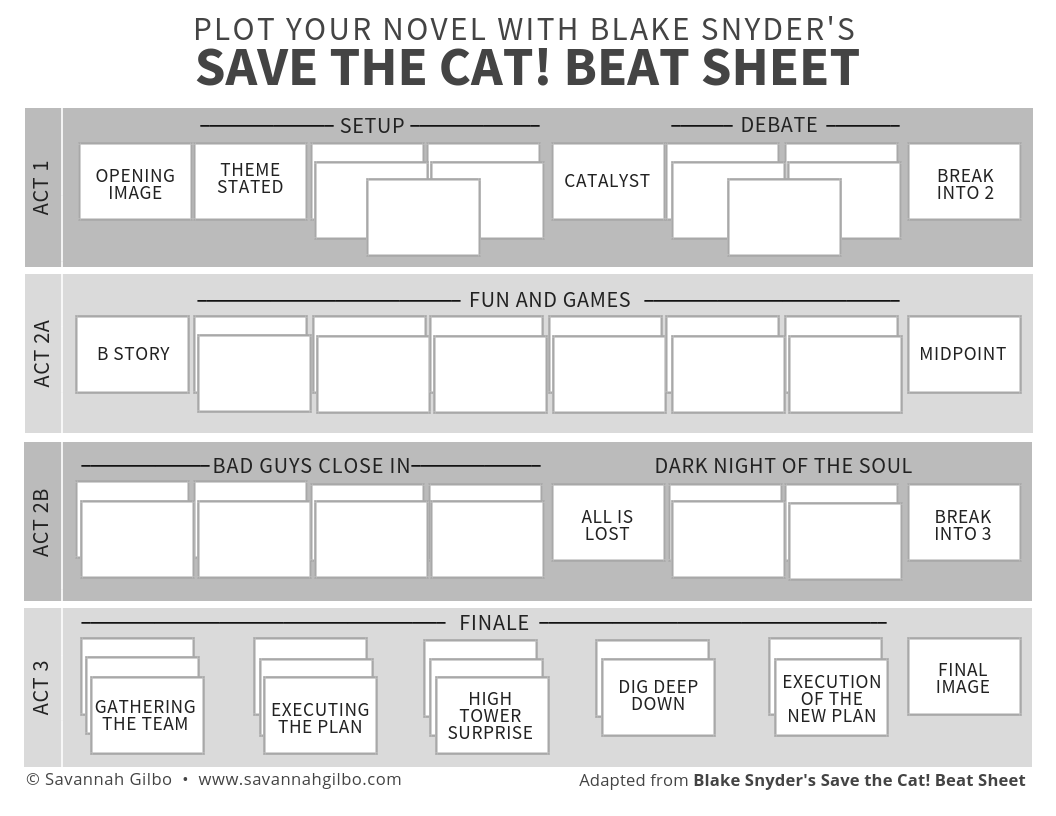
Writing Tips to Use this Method:
1. Purchase the book. Synder is funny and uses simple examples.
2. Grab your large sketch pad and stick notes. Be prepared to make changes as you go. It's more like a puzzle at this stage & once the pieces fit together it's a great feeling. Sometimes this stage should be done with a partner.
3. As you watch shows, ask yourself "which step" is this part of the plot. You'll be surprised how quickly you can identify these stages both in the show and then in your own writing.
4. Be patient with your plot. Sometimes it's best to let it "rest" for a while (Stephen King does this with every work he writes) and then come back to it.
5. Sometimes it helps to work backwards. Begin at step 15 and work your way back to the opening image.
Ready for more resources and support? I've linked them below for you:
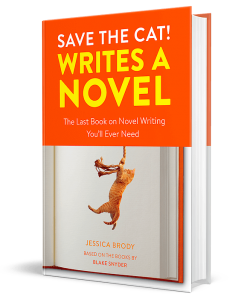
Novelist Jessica Brody presents a comprehensive story-structure guide for novelists that applies the famed Save the Cat! screenwriting methodology to the world of novel writing.
Revealing the 15 "beats" (plot points) that comprise a successful story--from the opening image to the finale--this book lays out the Ten Story Genres (Monster in the House; Whydunit; Dude with a Problem) alongside quirky, original insights (Save the Cat; Shard of Glass) to help novelists craft a plot that will captivate--and a novel that will sell.
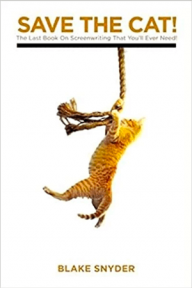 Here’s what started the phenomenon: the best seller, for over 15 years, that’s been used by screenwriters around the world! Blake Snyder tells all in this fast, funny and candid look inside the movie business.
Here’s what started the phenomenon: the best seller, for over 15 years, that’s been used by screenwriters around the world! Blake Snyder tells all in this fast, funny and candid look inside the movie business.
“Save the Cat” is just one of many ironclad rules for making your ideas more marketable and your script more satisfying, including: The four elements of every winning logline The seven immutable laws of screenplay physics The 10 genres that every movie ever made can be categorized by ― and why they’re important to your script.
Why your Hero must serve your Idea Mastering the 15 Beats Creating the “Perfect Beast” by using The Board to map 40 scenes with conflict and emotional change How to get back on track with proven rules for script repair. This ultimate insider’s guide reveals the secrets that none dare admit, told by a showbiz veteran who’s proven that you can sell your script if you can save the cat.
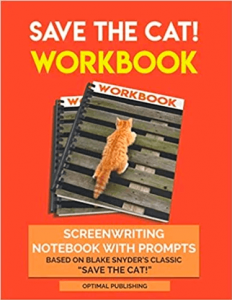 Writing Skills Reference | Film Screenwriting | Guided Prompts For Easy Screenwriting
Writing Skills Reference | Film Screenwriting | Guided Prompts For Easy Screenwriting
Capturing your thoughts, mapping out your story and outlining your screenplay is ESSENTIAL if you are to write with clarity and purpose.
This notebook is designed to help you do just that, by employing the techniques and ideas in Blake Snyder's seminal (and entertaining) work on screenwriting "Save The Cat". If you haven't read it yet, please do - it will provide a fresh perspective on how to write successfully for screen.
This book provides a template for:
The title and loglines
The premise (1 page)
Character profiles (3 pages)
The 15 beats that Snyder identifies - one per page
A storyboard - ideally used with sticky Post-Its, but this isn't essential - you can use a pencil and eraser! Now with prompts and page guides
132 pages - space for 6 screenplay plans
Features:
8.5" x 11.5" large format high quality white interior
Glossy cover
Softcover for easy carrying and storage
Please Note: THIS IS THE EXPANDED EDITION: with more pages and extra prompts
IDEAL GIFT FOR SCREENWRITERS - PERFECT COMPANION TO "SAVE THE CAT"
Imagine knowing what the brain craves from every tale it encounters, what fuels the success of any great story, and what keeps readers transfixed. Wired for Story reveals these cognitive secrets--and it's a game-changer for anyone who has ever set pen to paper.
The vast majority of writing advice focuses on "writing well" as if it were the same as telling a great story. This is exactly where many aspiring writers fail--they strive for beautiful metaphors, authentic dialogue, and interesting characters, losing sight of the one thing that every engaging story must do: ignite the brain's hardwired desire to learn what happens next. When writers tap into the evolutionary purpose of story and electrify our curiosity, it triggers a delicious dopamine rush that tells us to pay attention. Without it, even the most perfect prose won't hold anyone's interest.
Backed by recent breakthroughs in neuroscience as well as examples from novels, screenplays, and short stories, Wired for Story offers a revolutionary look at story as the brain experiences it. Each chapter zeroes in on an aspect of the brain, its corresponding revelation about story, and the way to apply it to your storytelling right now.
Recommended Reading

